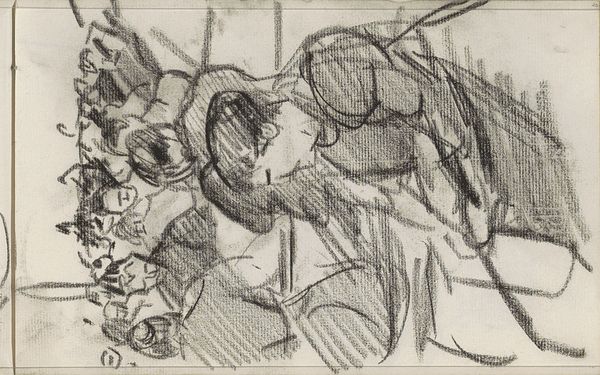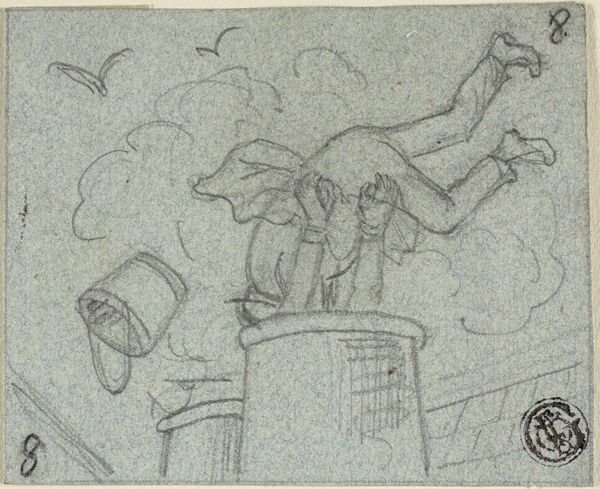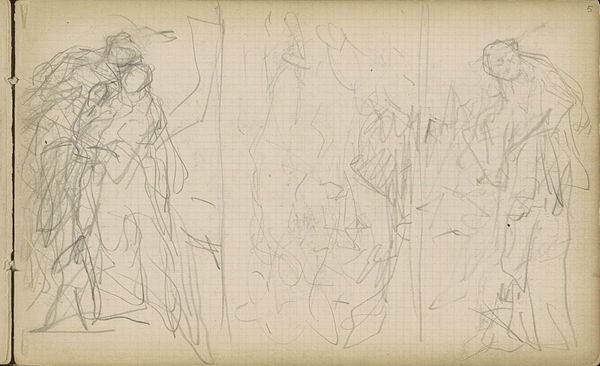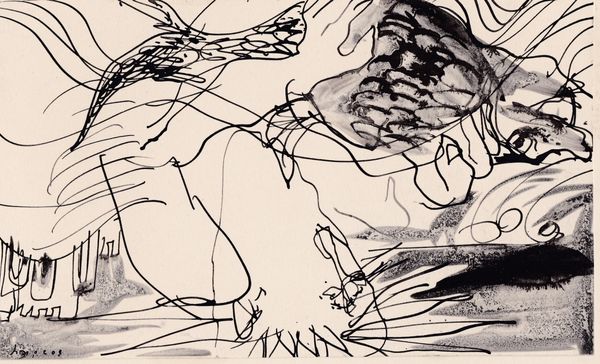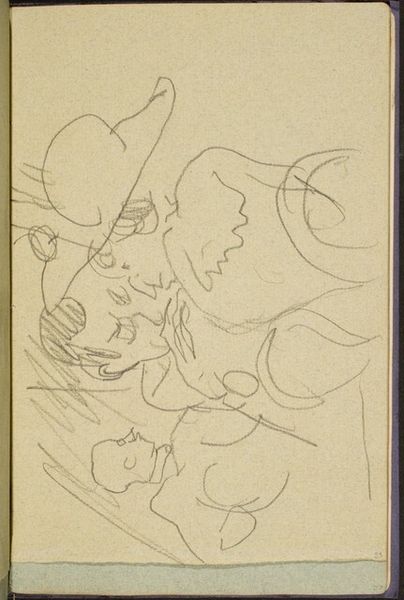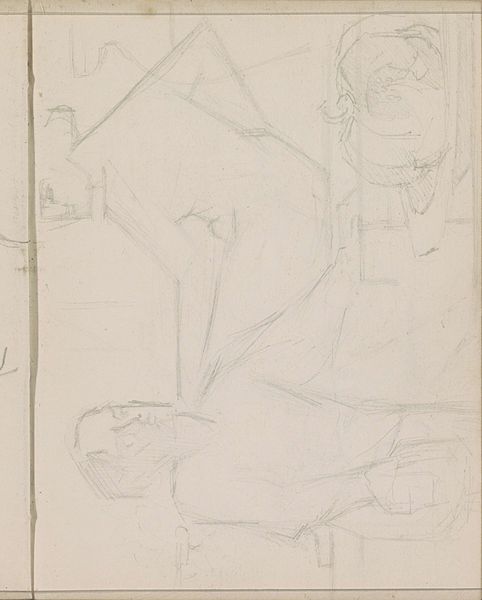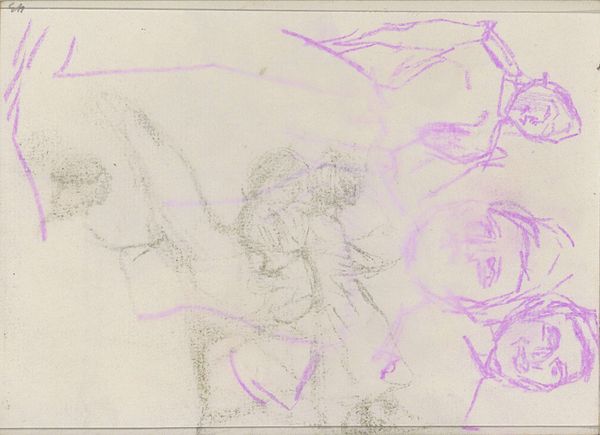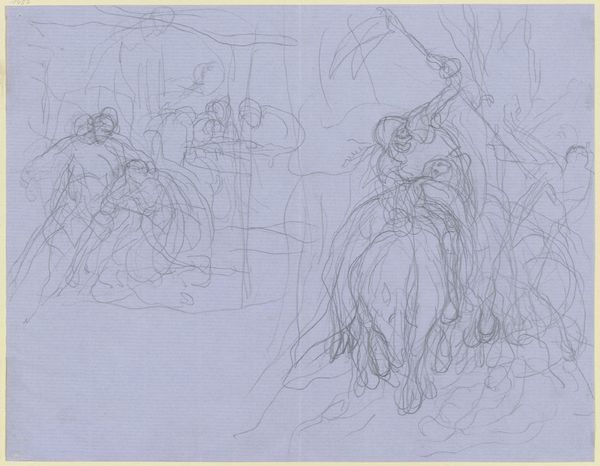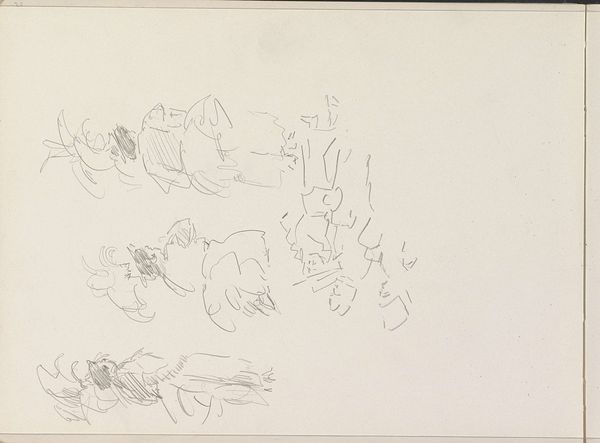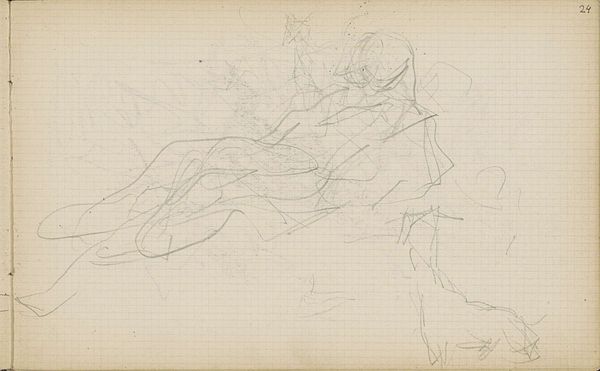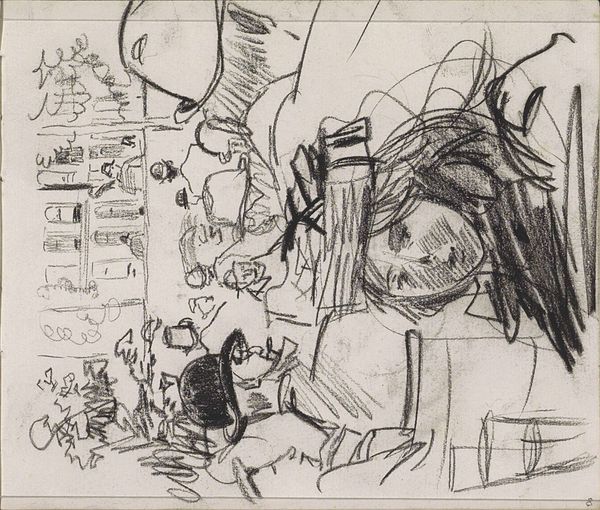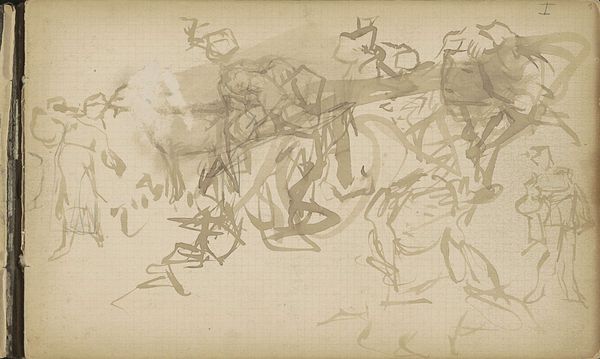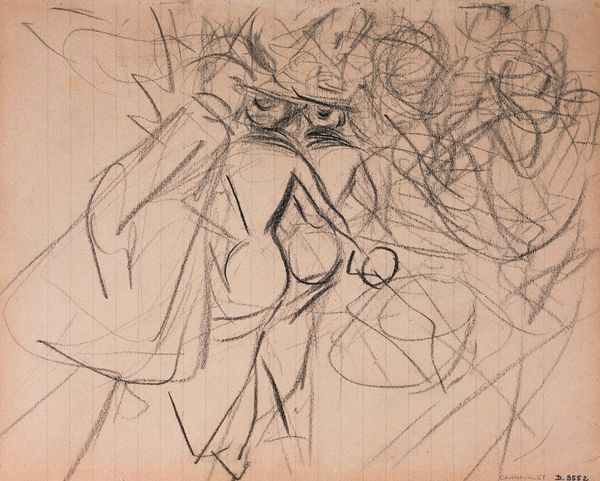
Copyright: Public domain
Editor: This is Théophile Alexandre Steinlen’s 1897 pencil drawing, "Chanson a Boire Preliminary Sketch." It has a spontaneous feel, almost unfinished, which gives it an energetic quality. What stands out to you in terms of its composition? Curator: Notice how the figures are distributed across the picture plane. The composition operates on multiple planes that convey movement with structural repetition, echoing forms such as tilted heads and glasses being raised. Are we seeing an early form of Cubist structure, a fragmentation of figures in motion? Editor: That's a great point. I was so focused on the immediate, lively quality that I missed how strategically the forms were being replicated. Curator: Precisely! Consider the interplay between light and shadow – although minimally rendered in pencil, they give volume to the figures. Steinlen suggests depth and perspective with carefully hatched lines to define the overall organization and massing, without resorting to traditional shading. It leads us to consider how line work creates form, even in its most rudimentary stage. The linear patterns are not merely descriptive but performative. Editor: So you’re seeing it less as an incomplete sketch and more as a deliberate investigation into the power of line itself? Curator: It's a preliminary sketch, so we have to view it as such; but considering its composition, use of space and mass, there's more to it. What have you taken away from our observations? Editor: It really helped me see how looking closely at the structure can open up new interpretations and perspectives about even preliminary art pieces. Curator: And for me, returning to first principles serves as an important reminder of art's semiotic power.
Comments
No comments
Be the first to comment and join the conversation on the ultimate creative platform.
